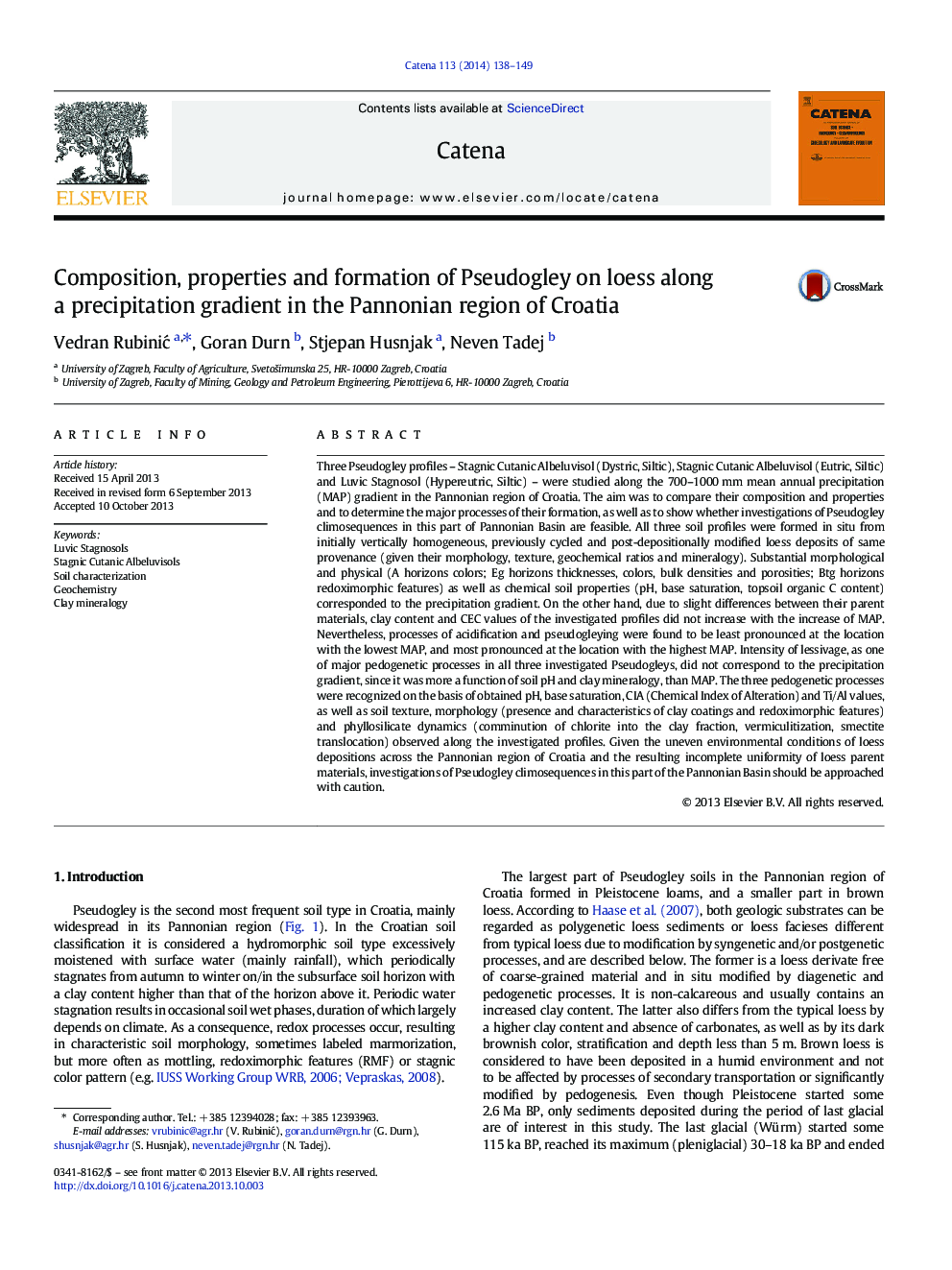| Article ID | Journal | Published Year | Pages | File Type |
|---|---|---|---|---|
| 4571519 | CATENA | 2014 | 12 Pages |
•Substantial Pseudogley features correspond to precipitation gradient.•Lessivage is the main process in creation of the vertical texture contrast.•Lessivage is a function of soil pH and clay mineralogy, rather than precipitation.•Chlorite, illitic material and kaolinite are inherited from parent material.•C–V MLM and vermiculite are formed as a result of chlorite destabilization.
Three Pseudogley profiles – Stagnic Cutanic Albeluvisol (Dystric, Siltic), Stagnic Cutanic Albeluvisol (Eutric, Siltic) and Luvic Stagnosol (Hypereutric, Siltic) – were studied along the 700–1000 mm mean annual precipitation (MAP) gradient in the Pannonian region of Croatia. The aim was to compare their composition and properties and to determine the major processes of their formation, as well as to show whether investigations of Pseudogley climosequences in this part of Pannonian Basin are feasible. All three soil profiles were formed in situ from initially vertically homogeneous, previously cycled and post-depositionally modified loess deposits of same provenance (given their morphology, texture, geochemical ratios and mineralogy). Substantial morphological and physical (A horizons colors; Eg horizons thicknesses, colors, bulk densities and porosities; Btg horizons redoximorphic features) as well as chemical soil properties (pH, base saturation, topsoil organic C content) corresponded to the precipitation gradient. On the other hand, due to slight differences between their parent materials, clay content and CEC values of the investigated profiles did not increase with the increase of MAP. Nevertheless, processes of acidification and pseudogleying were found to be least pronounced at the location with the lowest MAP, and most pronounced at the location with the highest MAP. Intensity of lessivage, as one of major pedogenetic processes in all three investigated Pseudogleys, did not correspond to the precipitation gradient, since it was more a function of soil pH and clay mineralogy, than MAP. The three pedogenetic processes were recognized on the basis of obtained pH, base saturation, CIA (Chemical Index of Alteration) and Ti/Al values, as well as soil texture, morphology (presence and characteristics of clay coatings and redoximorphic features) and phyllosilicate dynamics (comminution of chlorite into the clay fraction, vermiculitization, smectite translocation) observed along the investigated profiles. Given the uneven environmental conditions of loess depositions across the Pannonian region of Croatia and the resulting incomplete uniformity of loess parent materials, investigations of Pseudogley climosequences in this part of the Pannonian Basin should be approached with caution.
